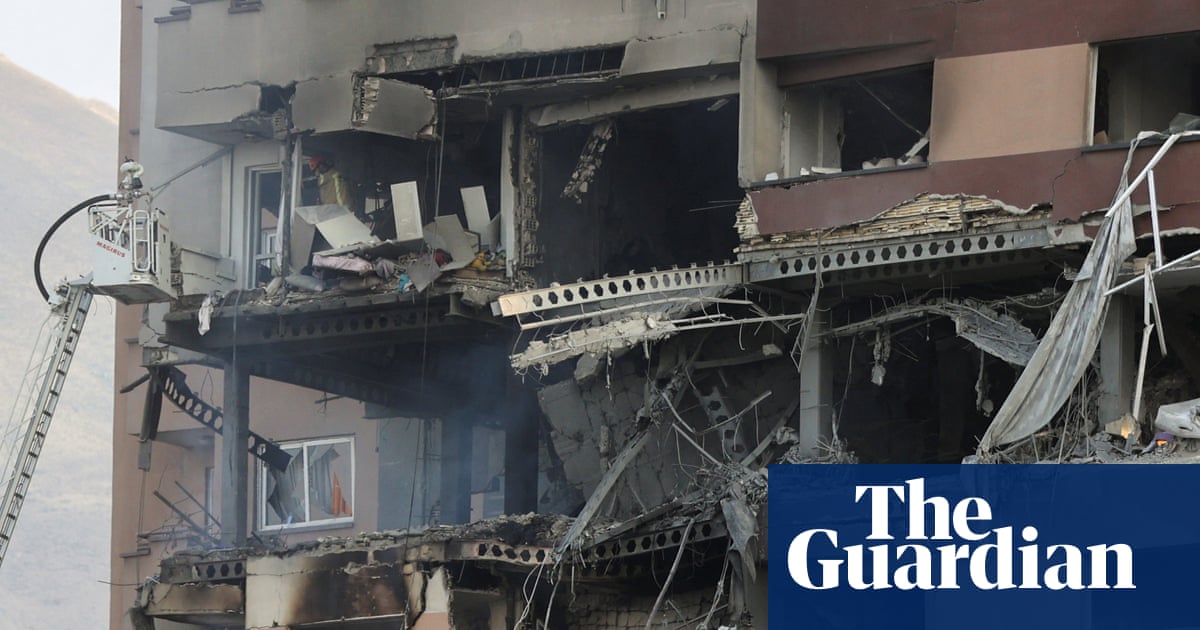Israel’s offensive against Iran is the latest link in a chain of events triggered by the attack launched by Hamas from Gaza intoIsraelon 7 October 2023. All have successively weakened Tehran and, militarily at least, empowered Israel. Without each, it is difficult to see how the new offensive it launched directly against Iran on Friday might be possible.
The first was the Israeli offensive in Gaza. This was bloody and costly, especially in Palestinian lives, but within weeks had degradedHamassufficiently for the Islamist militant organisation to no longer pose a significant current threat to Israeli citizens.
As Hamas was part of the so-called axis of resistance, a coalition of similar organisations across the Middle East assembled by Tehran over the last decade or so to project power across the region and to deter Israel from striking at Iran’s nuclear programme, this had major regional implications.
Then, in April last year, Israel bombed the Iranian embassy complex in Damascus, killing seven people. In response, Iran attacked Israel directly for the first time, launching an ineffective barrage of drones. The conflict between Iran and Israel, long fought through proxies, assassinations and strikes away from Israeli soil, had now spilled into the open.
By the autumn, with Hamas weakened, Israel could turn against Hezbollah, the Lebanese-based, Iran-supported group that was by far the most potent of the members of the axis of resistance.
In September, Israel eliminated the entire leadership echelon of Hezbollah as well as most of its feared missile stockpile and invaded its heartland in southern Lebanon without meeting significant resistance. Even Hezbollah loyalists acknowledged it had suffered a swingeing defeat.
Again, Iran launched another ineffective air offensive against Israel, which responded with airstrikes that wiped out much of Iran’s air defence system, opening the way to Friday’s wider attack.
Equally consequentially, Hezbollah’s sudden weakness meant it was unable to come to the defence of the al-Assad regime inSyria, another crucial Iranian ally, when rebels there launched an offensive. The fall of Assad in December ended decades of close relations between Tehran and Damascus. This further weakened the crumbling axis of resistance, exposed Iranian proxies in Syria and meant Israeli warplanes could reach vulnerable targets in Iran more easily.
With Iran-backed militias in Syria and in Iraq convinced that turning rhetorical threats to attack Israel into action was a poor idea, the Houthis in Yemen were left as the only remaining member of the axis of resistance still engaged in hostilities with Israel. They harassed shipping in the Red Sea but the ballistic missiles they lobbed hopefully at Tel Aviv could cause no significant strategic harm.
By early spring of this year, the decision of Ali Khamenei, Iran’s supreme leader, to entrust Iran’s security to its proxies looked a supreme miscalculation and Benjamin Netanyahu, Israel’s prime minister, keen to exploit what might be a transient window of opportunity, began preparing the major offensive he has long hoped to launch.
A deadline of April was missed, but not one set inadvertently by President Trump who allowed just 60 days for talks with Tehran to come to a new agreement on Iran’s nuclear programme, which Israel claims was close to producing a nuclear weapon. That limit expired last week.
Netanyahu told Iranians on Friday that he hoped Israel’s continuing military operation in Iran will “clear the path for you to achieve your freedom”.
Even if Israel is not seeking to turn back the clock to years before the 1979 Iranian revolution, when the country was a close ally of Israel and of the US too, the nature of the targets Israeli planners chose may have the effect of at least dismantling the regime that has ruled ever since that seismic event.
This is partly a consequence of the central role still played in Iran by a generation of men who began their careers in the aftermath of the fall of the Shah or even earlier.
The first casualties on Friday included many senior officers who were among the earliest recruits to the Islamic Revolutionary Guard Corps (IRGC), which was founded in 1980 to protect the new rule of the radical clerics and then evolved into the beating ideological activist heart of the revolutionary project. Several were also veterans of the Iran-Iraq war, which lasted from 1980 to 1981 and which many historians regard as the crucible in which the current regime was forged.
At least one of the nuclear scientists killed in the first wave of strikes was a veteran of the IRGC too. Ali Shamkhani, a senior aide to Khamenei who was targeted, had been an underground Islamist activist in the 1970s before filling a series of increasingly important roles. Khamenei himself came to power as the successor to the Ayatollah Khomeini in 1989 but began his activist Islamist career in the late 60s.
It is extremely unlikely that, when the dust finally clears after this war, Iran reverts to a pro-Israeli or pro-US stance. But what does appear very probable is that the power of men who first overthrew the shah and then led the revolutionary regime over subsequent decades will be gravely, possibly fatally, weakened.
